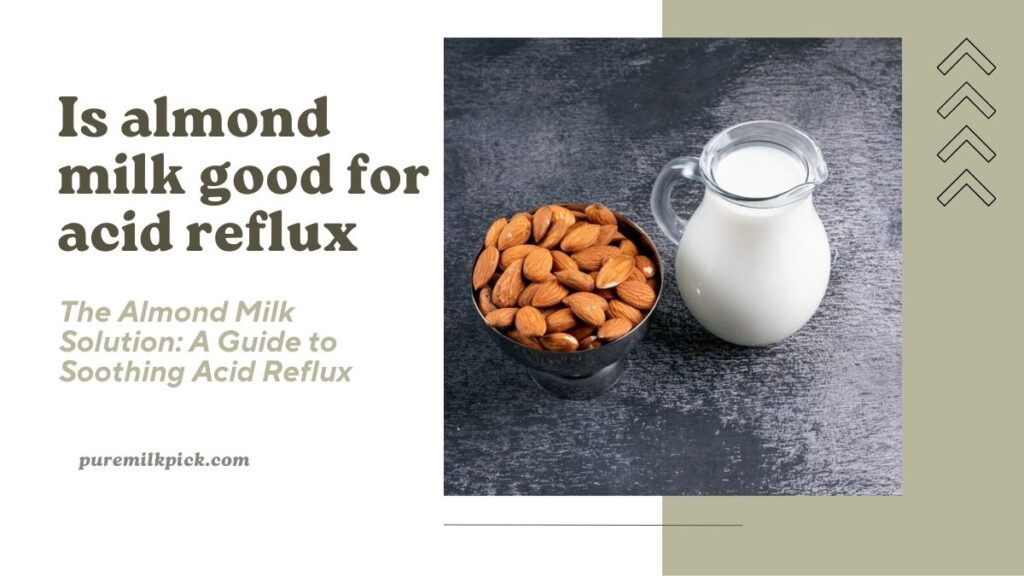Greetings, almond milk enthusiasts! Have you ever pondered over what gives your favorite plant-based beverage its unique taste, texture, and shelf life? Enter the fascinating world of pH levels in almond milk! In this comprehensive exploration, we’ll embark on a journey to unravel the significance of pH levels and understand why they matter in the context of almond milk. From the basics of pH to the intricate relationship between acidity and alkalinity, we’ll decipher how these factors influence your almond milk experience.
Understanding pH Levels
Definition of pH and its Significance
pH, short for “potential of hydrogen,” is a measure of how acidic or alkaline a substance is on a scale of 0 to 14. A pH of 7 is considered neutral, below 7 is acidic, and above 7 is alkaline. This scale plays a pivotal role in determining the properties of various substances, impacting taste, texture, and even chemical reactions.
pH Scale Explanation (0-14)
Understanding the pH scale is crucial. It’s logarithmic, meaning each unit change represents a tenfold difference in acidity or alkalinity. For instance, a substance with a pH of 5 is ten times more acidic than a substance with a pH of 6. This logarithmic nature underlines the sensitivity of pH and its profound impact on the characteristics of almond milk.
Impact of pH on Food and Beverages
The pH of food and beverages directly affects their safety, taste, and longevity. For almond milk, pH levels determine its flavor profile, texture, and susceptibility to spoilage. The delicate balance between acidity and alkalinity significantly influences consumers’ sensory experiences.
Read More: Exploring the Creaminess of Almond Milk: Store vs Homemade
Alkalinity and Acidity in Almond Milk
Natural pH Range of Almonds
Almonds, the primary ingredient in almond milk, naturally possess a pH between 6 and 7. This natural acidity contributes to the initial pH of homemade almond milk.
pH Variations in Homemade vs. Store-Bought Almond Milk
Homemade almond milk may exhibit pH variations due to differences in preparation methods, including soaking times and blending techniques. Conversely, store-bought versions often undergo processing and additives, altering their pH levels.
Factors Affecting pH Levels in Almond Milk
Various factors impact almond milk’s pH, including the quality of almonds, water purity, additives like sweeteners or stabilizers, and the pasteurization process. These elements collectively contribute to the final pH of the product available for consumption.

Importance of pH in Almond Milk
Shelf Life and pH Stability
The pH level plays a critical role in determining almond milk’s shelf life. Maintaining an optimal pH helps inhibit the growth of harmful bacteria and extends the beverage’s freshness.
Flavor and Texture Impacts
pH influences the flavor and texture profiles of almond milk. Slight pH variations can alter the taste, making it either more acidic or alkaline, affecting its palatability.
Health Considerations: pH and Digestibility
While the impact of pH on digestibility isn’t extensively studied, some suggest that a balanced pH in almond milk may aid in easier digestion for some individuals, potentially enhancing its health benefits.
Measurement and Regulation of pH in Almond Milk
pH Testing Methods
To ensure quality and consistency, various methods, including pH meters and litmus paper, are employed to measure the pH of almond milk during production.
Regulatory Standards and Guidelines
Regulatory bodies often set standards for pH levels in food and beverages, ensuring they meet safety and quality benchmarks. Compliance with these guidelines is crucial for commercial almond milk producers.
Industry Practices and Quality Control
Companies employ stringent quality control measures, monitoring pH levels at different stages of production to guarantee product safety and consistency.
Impact of pH on Almond Milk Alternatives
Comparison with Other Plant-Based Milks
Almond milk’s pH differs from other plant-based alternatives like soy, oat, or coconut milk, contributing to distinct taste profiles. Understanding these differences aids consumers in making informed choices.
pH Variations and Consumer Preferences
Consumers’ taste preferences often influence the market demand for almond milk with specific pH levels, leading to product diversification to cater to varied tastes.
Environmental and Sustainability Implications
Almond milk production’s environmental impact, including water usage for almond cultivation, might be affected by pH-related processing choices. Innovations in pH management may contribute to more sustainable practices.

Practical Applications and Tips
Storing Almond Milk for pH Preservation
Proper storage practices, such as refrigeration, airtight containers, and avoiding exposure to light, aid in preserving almond milk’s optimal pH levels.
DIY pH Testing at Home
Enthusiasts can utilize pH testing kits to gauge the pH of homemade almond milk, allowing for adjustments to suit personal taste preferences.
Understanding Labels and pH Information
Reading labels can provide insights into almond milk’s pH levels, aiding consumers in choosing products aligned with their preferences and dietary needs.
External Link: Understanding pH and Its Role in Food
Future Trends and Research
Innovations in Almond Milk pH Management
Ongoing research explores innovative techniques to manage and optimize pH levels in almond milk, potentially revolutionizing the beverage industry.
Emerging Studies on pH and Health Benefits
Continued studies may uncover deeper connections between pH levels in almond milk and potential health benefits, providing valuable insights into its nutritional value.

Market and Consumer Trends Related to pH-Aware Almond Milk
Consumer awareness regarding pH levels’ impact on taste and health may drive market trends, influencing the production and marketing strategies of almond milk brands.
Conclusion
Unveiling the mysteries of almond milk’s pH levels has shed light on the critical role this factor plays in taste, quality, and health considerations. Understanding pH empowers consumers to make informed choices, while ongoing research and innovations promise an exciting future for almond milk aficionados.
Frequently Asked Questions
pH determines the taste, shelf life, and safety of almond milk, impacting its flavor profile and overall quality.
Yes, pH testing kits are available for home use, allowing you to monitor and adjust the pH of homemade almond milk.
While more research is needed, maintaining an optimal pH may aid in easier digestion and potentially enhance the beverage’s health benefits.



